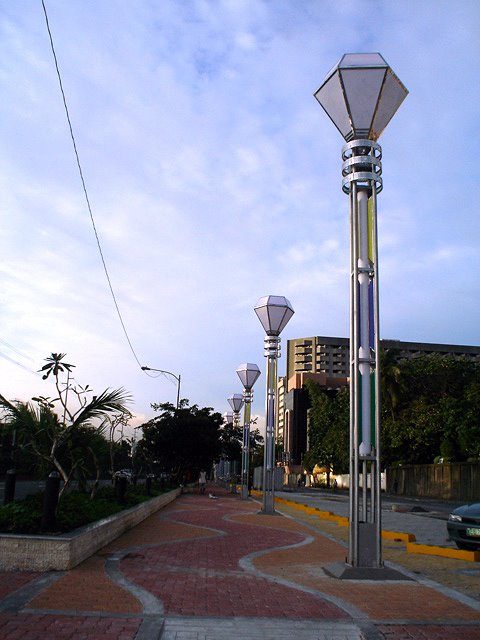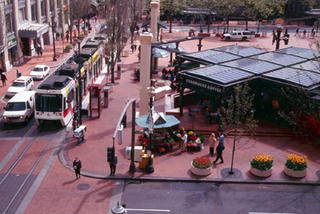the changing city

This from BWorld Online last week:
"After a decades-long wait, the Cultural Center of the Philippines (CCP) may be on the way to realizing its vision of becoming an Asian mecca for arts and culture as it prepares to bid out almost 60 hectares of land reclaimed from Manila Bay...
- 57.8 hectares of land comprising most of the area declared by the Supreme Court as property of the Cultural Center of the Philippines.
- As currently planned, the area will be awarded to a single developer.
Apparently the NCCA held a design competition for the masterplan that had a top prize of Php 100,000.00, and the winners were supposed to have been announced last December 8. But I can't find any announcements either on the NCCA site nor the CCP site. Although the BWorld article says the masterplan was completed in 2003 by Planning Resources and Operations Systems, Inc.
From a two part report dated May 16, 2005, in the Manila Times Online, PROS is a division of Palafox and Associates, although their website does not list the CCP masterplan as a project.
If done right, this will create an northend anchor to Baywalk -and an honest to goodness public waterfront for the city. It will also have a huge multiplier effect on the Roxas Boulevard corridor.
The plan allocates 10% of the development to residential uses -"both transient and permanent" -which I assume means rental units will be included. Some 32% of the project area will be devoted to open space.
Part two of the report also quotes CCP President Nestor Jardin
“Though there are major thoroughfares in the area, we will have a public transport terminal that is accessible to all, meaning an egalitarian vision. Whether you’re rich or poor, you’re welcome, so public transport hubs are a must.”
Which will help as far as accessibility -but the area's main problem is the barrier of Roxas Boulevard which, because of the recent expansion of the roadway, is less pedestrian friendly. The CCP site is accessed through two east-west arteries - the north-end via Gil Puyat (Buendia), which has been obscured by the short-sighted flyover, and south-end via Vito Cruz -which is too narrow. Both of are also not particularly pedestrian friendly.
What would crown this effort would be a tram at surface level which would run the length of Roxas Boulevard - connecting Intramuros to the MRT/LRT hub at the Taft-EDSA intersection. Plus lateral line linking the site to the Makati CBD via Buendia.
According to MTimes article, the goals of the plan are:
- Develop the CCP complex as a center for arts and culture in Asia and the centerpiece of artistic expression of the Filipino soul and spirit;
- Maximize the income potentials of CCP’s real properties;
- Encourage private-sector participation in the development of the CCP complex; and
- Promote private and public activities in the CCP complex.
My hope is that CCP will make sure to include artists apartments -affordable units. It could really be interesting if they provided live-work housing for artists.
If anyone has anymore details about this, please email me.
(Two other major pieces of property soon to be developed will have huge multiplier effects: the MRT North Depot (North Triangle Business District) and Camp Crame/Camp Aguinaldo complexes.)










